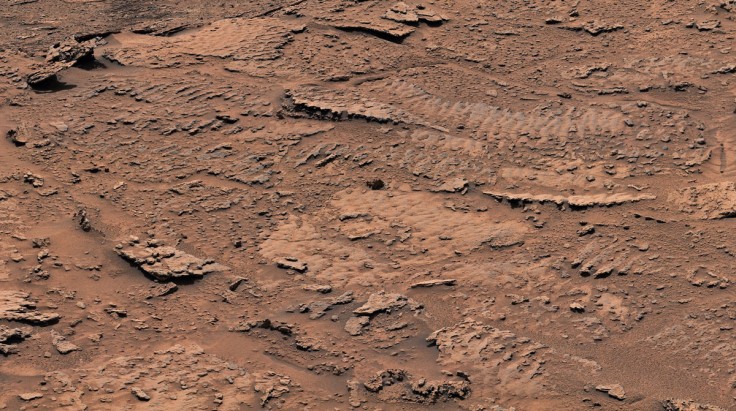Mars definitely had water at some point in the past.
NASA's Mars Curiosity rover recently found rocks imprinted with tiny ripples from an ancient Martian lake - clear evidence that the Red Planet once had water on it.
NASA's Mars Curiosity rover, the space agency's largest and most capable rover sent to Mars, has now exceeded its operational lifespan of at least one Martian year or almost two Earth years; it is still working even after ten years on Mars.
NASA Rippled Rock Textures Details

NASA mentioned in a blog post that it found evidence of ancient water ripples that formed within a shallow lake of the Red Planet billions of years ago. According to the Mars Curiosity team, the lake's waves stirred up sediment at its bottom, which created rippled textures in the rock over time.
This ancient Martian Lake is located on the slopes of Mount Sharp, which the rover has been ascending since 2014. The mountain is a 3-mile-tall mountain that once hosted numerous lakes and streams - places that would have provided a suitably rich environment for microbial life if any ever formed on the Red Planet.
Curiosity found the lake's preserved remains nearly half a mile above the mountain's base in a thin layer of dark rock standing out from the rest of Mt. Sharp, nicknamed the "Marker Band." This rock layer is hard enough for the Curiosity team to find difficulty in drilling a sample from it despite several attempts.
Regardless, Ashwin Vasavada, Curiosity's project scientist at NASA's Jet Propulsion Laboratory in Southern California, mentioned that the rippled rock textures found on one of Mount Sharp's ancient lakes were "the best evidence of water and waves that [NASA's] seen in the entire mission. She added that though Curiosity climbed through thousands of feet of lake deposits, they never saw evidence quite like it at a place they least expected - a dry one.
Instead of drilling a sample from the Marker Band, scientists and the Curiosity team will look for softer rock in the week ahead to collect samples from, presumably from other sites they are eager to explore.
Ramifications Of Curiosity's Finding
Curiosity's rippled rock texture finding suggests that Mars did not go from a wet planet to a dry one in a simple, linear manner, according to Space.com.
Researchers saw rock layers with regular spacing and thickness within the Marker Band but some distance away from the rippled textures.
The regular spacing and thickness found in the rock layers are similar to the ones found occurring on Earth during patterns of periodic change.
This rhythmic pattern in the marker band's layers may have been the result of similar events, hinting at changes in Mars' ancient climate.
Vasavada mentioned that due to these pieces of evidence, she believes that Mars' ancient climate had "a wonderful complexity to it much like Earth's."
Related Article : NASA Curiosity Rover Finds 'Duck' on Mars









